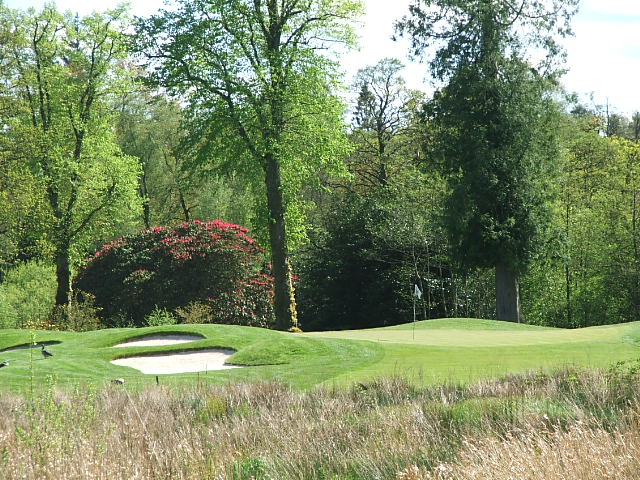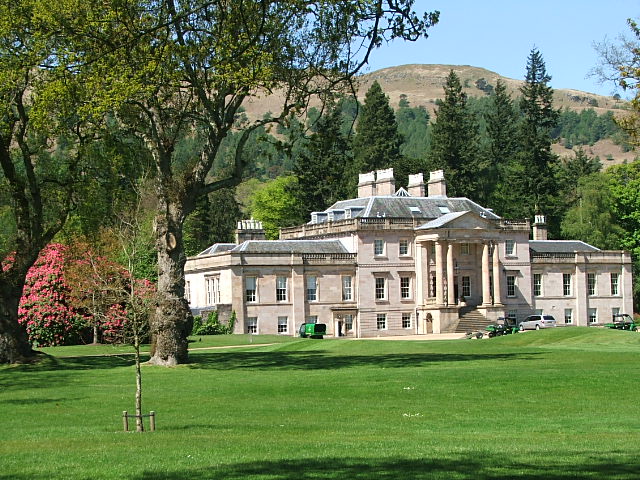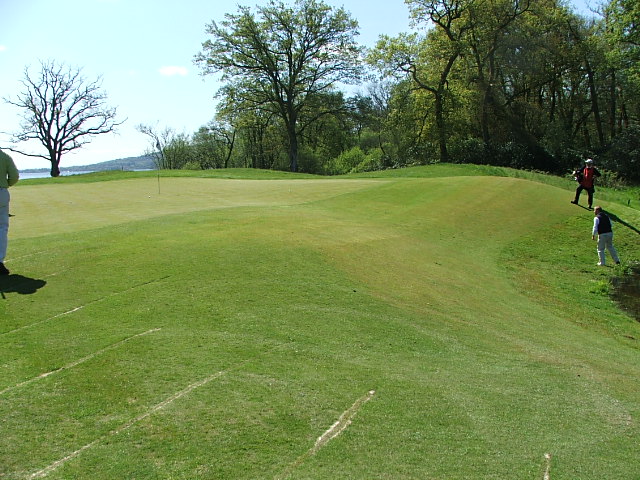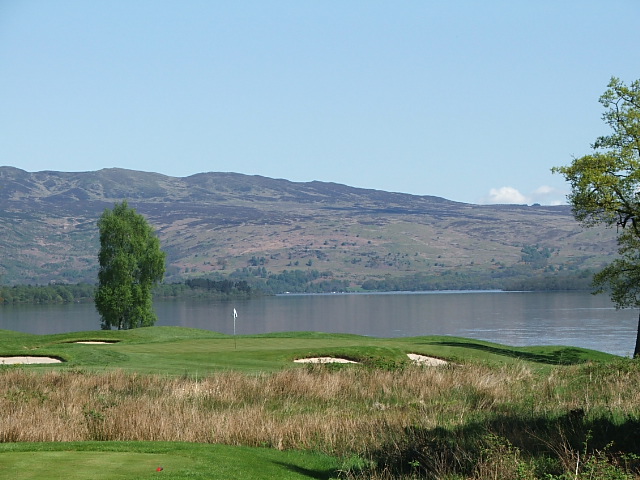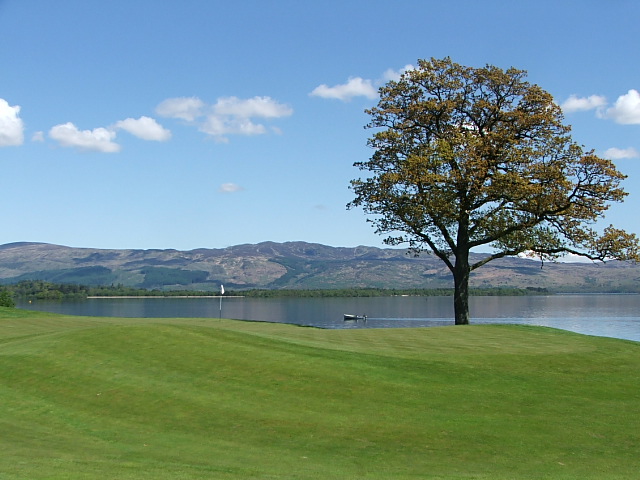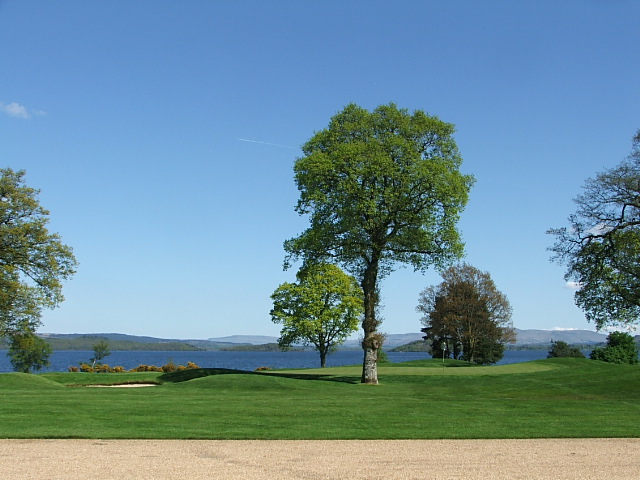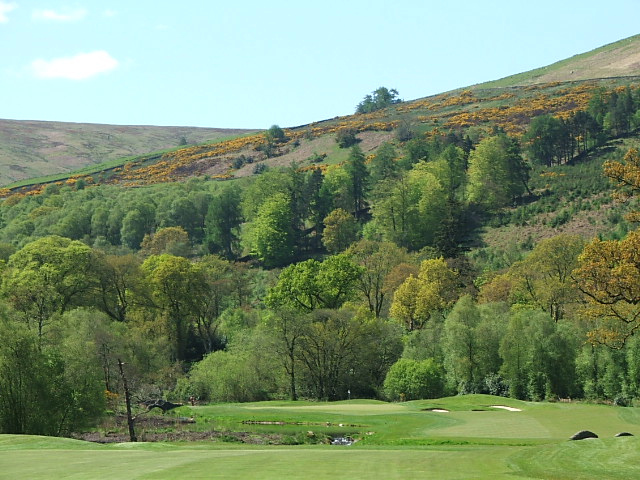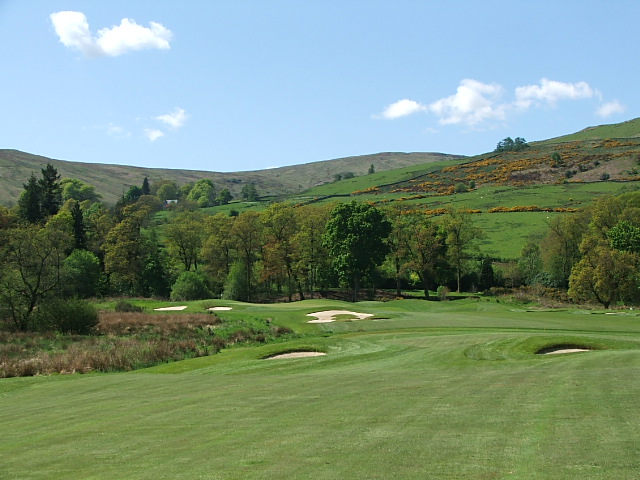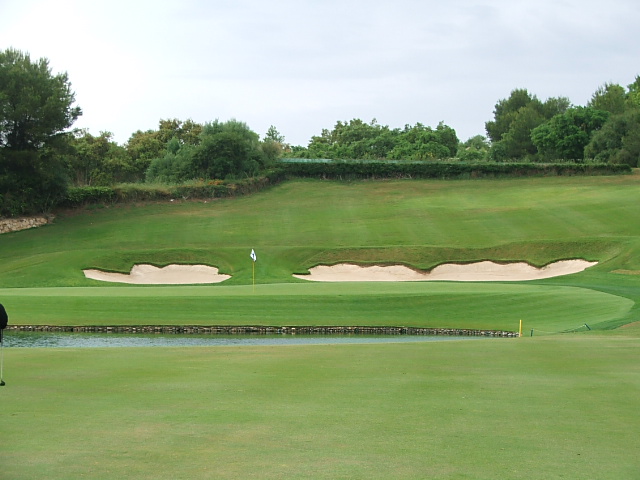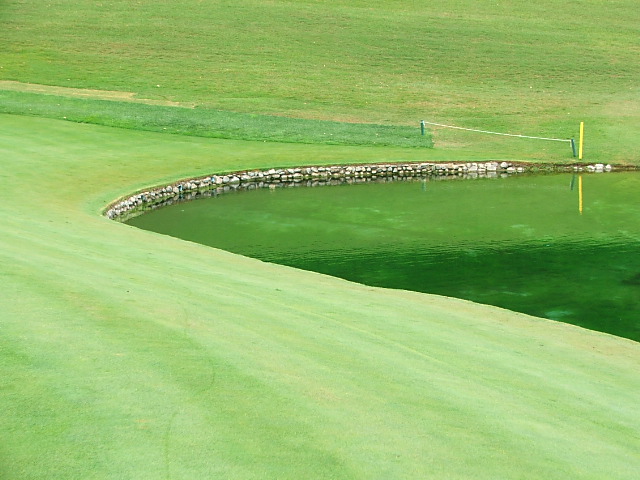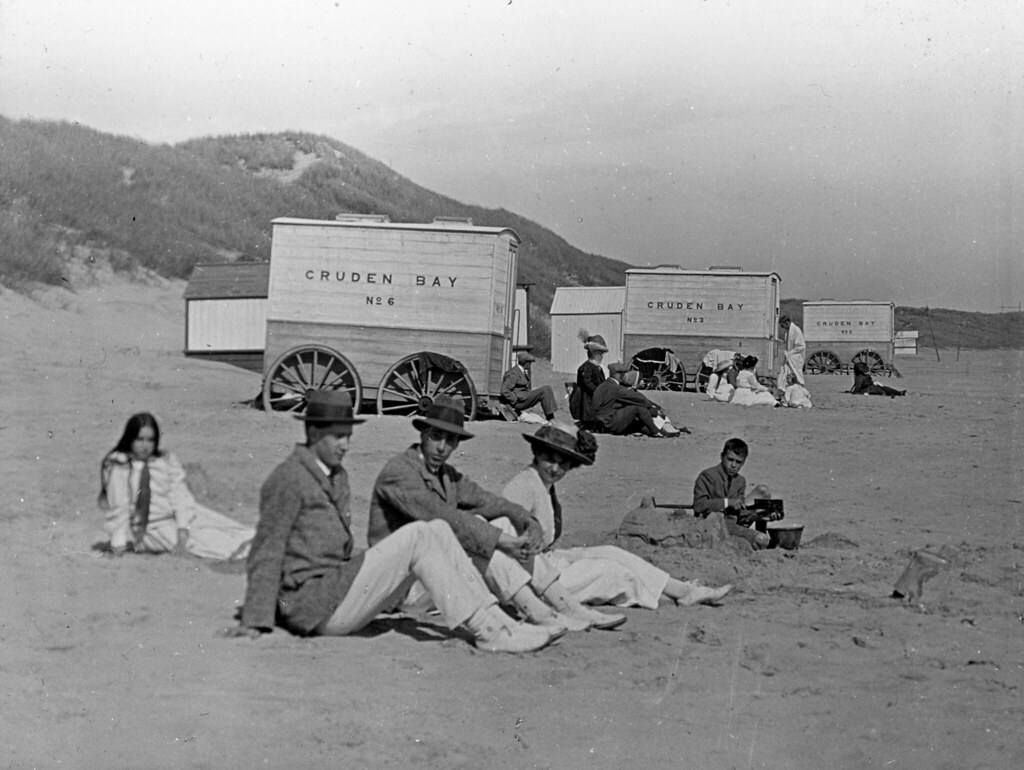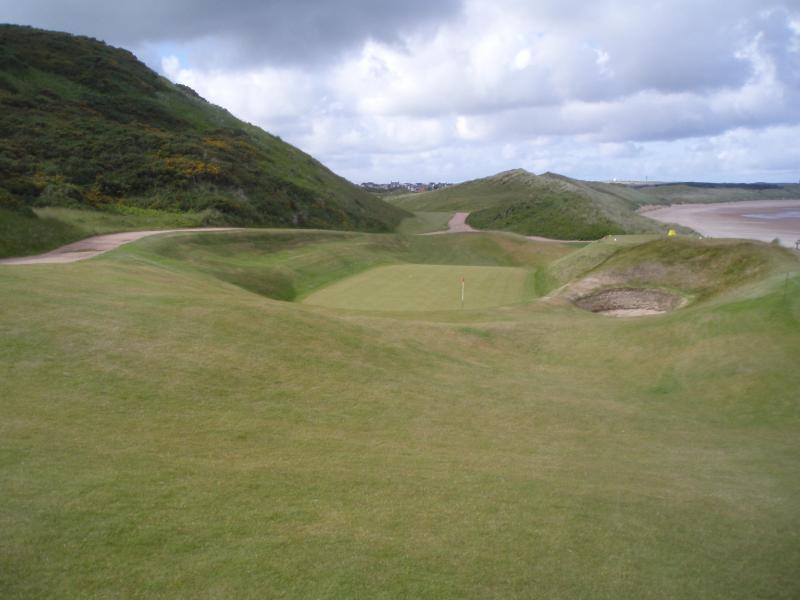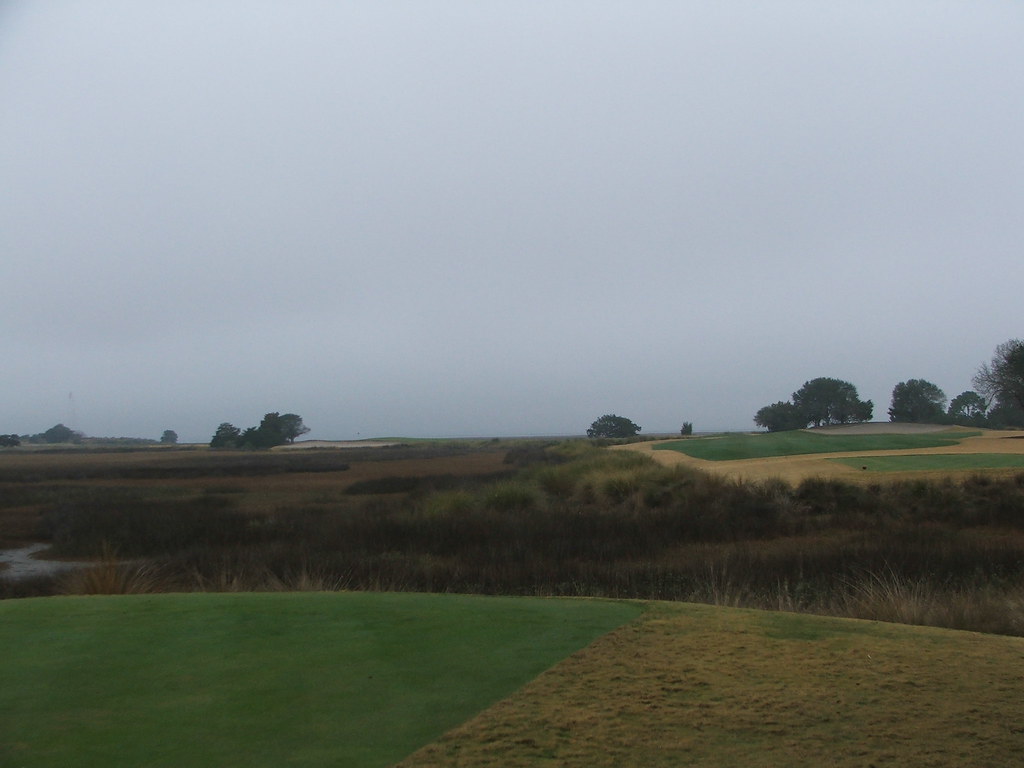 The side wall of the clubhouse at Valderrama
The side wall of the clubhouse at Valderrama
Valderrama Golf Club (ranked #77 in the world) is located between the Sierra Blanca mountains and the Mediterranean Sea in Southern Spain, not far from the Rock of Gibraltar. Valderrama is a very formal club; while it allows visitors, it also has a lot of rules, restrictions and protocol. Many areas are restricted to members only and you must wear a jacket indoors. In this regard it reminded me of Muirfield in Scotland. I was able to play Valderrama recently on a trip through Europe and was thrilled to do so. The course is private, but if you arrange it far enough in advance, following their rules, it is possible to play without too much hassle.
My journey to Spain
In keeping with my new lower net-worth, and being sensitive to the sudden era of frugality we find ourselves in, I'm economizing and being very austere. Conspicuous consumption is out, hard knocks are in. Going budget is the new black. As such, I'm now in the back of the plane and have to suffer through the indignity of the masses. While flying, I have previously been seated next to someone who has had to suffer the humiliation of the flight attendant handing them a seat belt extender. Flight attendant discretion and a barely audible voice are a prized characteristic when dealing with the porcine passenger. My flight over to Espana included a new travel experience for me.
I could see the big man coming a mile away. I caught him out of the corner of my eye. Please, I whispered to myself, I hope he's not next to me. As he approached my aisle I pretended not to see him in the hope it was a bad dream. "Excuse me sir, these are my seats." Hmm. I looked at the big boy with a puzzled expression and pulled out my boarding pass to look, while simultaneously saying a couple of quick Hail Mary's. "I have 15D and E, the aisle and middle," he said. I didn't see him with anyone else. Alas, I had taken my seat on the wrong side of the aisle and moved. Low and behold, he lopped into both seats, rather uncomfortably in my view. He was absolutely large enough to warrant two seats, but it is still a shock to the system to see this type of spectacle first hand.
I dozed off during taxi and takeoff and was awoken by a major ruckus underway in the plane. The case of the missing roll. Where was the dinner roll? Apparently his gourmand cuisine was missing a roll (wrapped in plastic for both sanitary reasons and for dramatic effect no doubt). Passengers in front of us and behind us had gotten rolls, but mysteriously, his roll was missing. You'd think that the crown jewels had been stolen. It's a four day-old, stale roll for gods sake, not a priceless possession. I have a new found respect for the flight attendants who handled his inquisition with grace and not a tinge of sarcasm as they made a valiant, yet unsuccessful effort to find another roll. I almost chimed in during the dispute to suggest to Mr. Arbuckle that he was playing the wrong card. Since he bought two seats, he should have demanded two full meals instead of obsessing about the damn roll, which was a side-show.
The poor woman in the window seat will probably never fly again she was so traumatized. I miss first-class, where an unlimited supply of freshly baked rolls are complimentary.
The Golf Course
Valderrama was originally designed in 1975 by Robert Trent Jones Sr., but the original design was compromised by having to fit into the wishes of the then owners to accommodate a housing development. In 1985, a new owner Jaime Ortiz-Patino reacquired more parcels of land around the course so that it could be lengthened and redesigned. Jones was brought back in to redevelop and remodel the course and he did a masterful job. Much credit goes to both Jones and Ortiz-Patino for sticking with the project and devoting so much effort to realize their collective vision. Ortiz-Patino has followed the benevolent dictator model at Valderrama that worked so successfully at Pine Valley (Crump), Oakmont (Fownes) and Augusta (Roberts).
Jones' design philosophy of "hard par, easy bogey" works well at Valderrama, although in the end it is quite a difficult course. The defining characteristic of the place, as you soon find out, is the over 2,000 old cork oak trees that are everywhere.
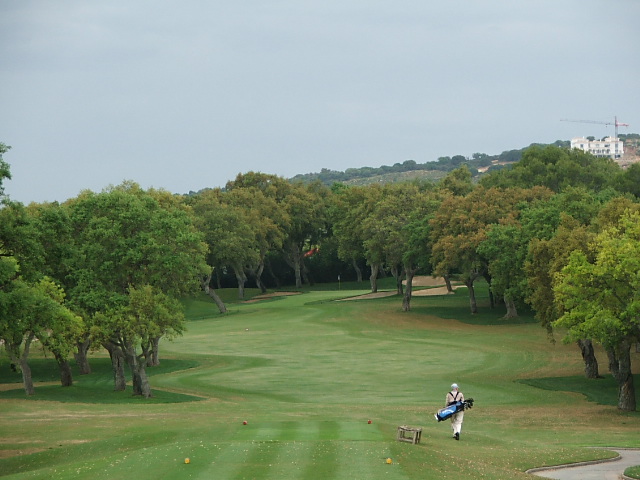
The 1st hole at Valderrama
It becomes clear quickly what makes Valderrama an interesting and unique course: the cork trees are in the way. The first hole is a good example. The tee shot on this 'S' shaped fairway looks simple enough to hit. The problem is not so much hitting the fairway, but being able to hit it in the proper place. If you don't drive the ball far enough to the left, your shot to the green will be blocked out by a cork tree. This is a consistent design philosophy at Valderrama, the overhanging tree, which Jones terms his 'bunker in the sky'.
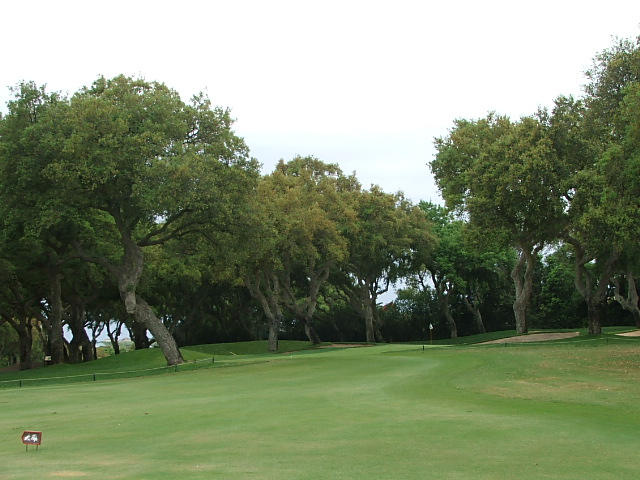
Approach shot to the 1st green
As you can see in the picture above, the approach to the first green is narrow and well guarded by overhanging trees. Valderrama is not a course where you just bomb the ball off the tee and hit a wedge to the green. It requires you to hit shots that you normally don't hit, and to hit them all day long.
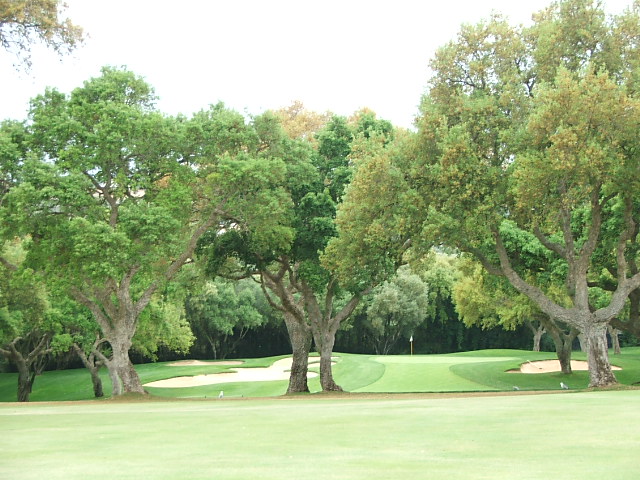
Approach shot to the 2nd green
The second hole, a 345 meter (for yards, add 10%) par four that requires a drive all the way to the left in order to avoid the trees seen above, which sit in the middle of the fairway. It is such a narrow landing area that it is highly likely that you will have a big decision to make on your next shot. Either try to hit over the tree or try a punch shot under the tree. Plain and simple, if you don't want to try out a variety of shots, you are not going to like Valderrama. If you think it's not fair to have a tree in your way after you hit the fairway, you also will not like Valderrama, since ten holes have an overhanging tree as a hazard.
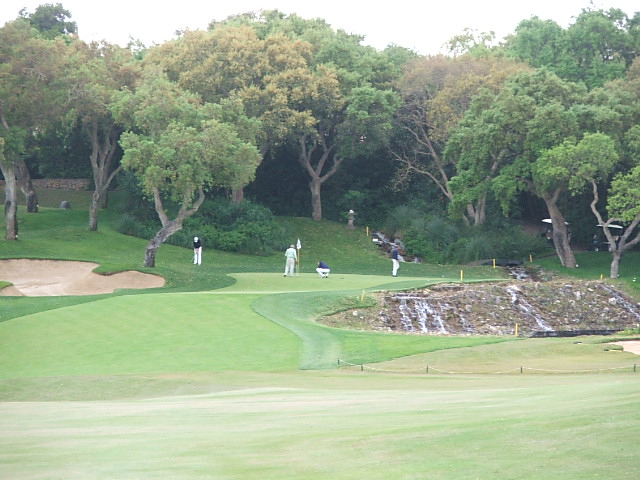
The elevated 4th green
Notice the tree overhanging the elevated green on this par five 470 meter fourth hole. Both when going for this green or when laying up, you have to thread the needle to put the ball in the correct location. Too far to the right and you risk the water. However, you also can't bail out too far to the left, because if you do, then the overhanging tree will block your shot to this multi-tiered, narrow green.
The fourth is a highly rated hole, and is ranked among the 500 Greatest Golf Holes in the World, in George Peper's book of the same name. It plays down a contoured, uneven fairway hemmed in by cork and olive trees. It reminded me of the isolated third hole at Durban Country Club, which winds its way through the bush.
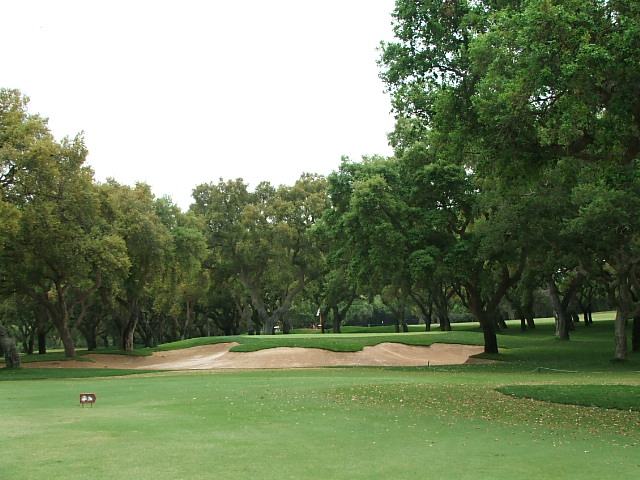
Short par four 8th green
Valderrama excels on its short par four holes such as the eighth (296 meters), tenth (333 meters) and thirteenth (341 meters). Each requires you to hit to the appropriate side of the fairway in order to have a clean approach to the small, elevated, well-bunkered greens. The eighth is seen above with the encroaching trees hemming in the green.
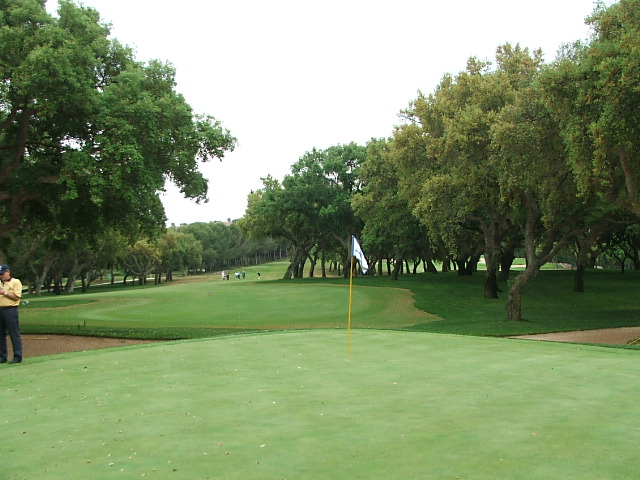
8th hole looking back from the green
You can see more precisely in this picture, which looks backward off the eighth green, how tricky the trees are, and how small the greens are.
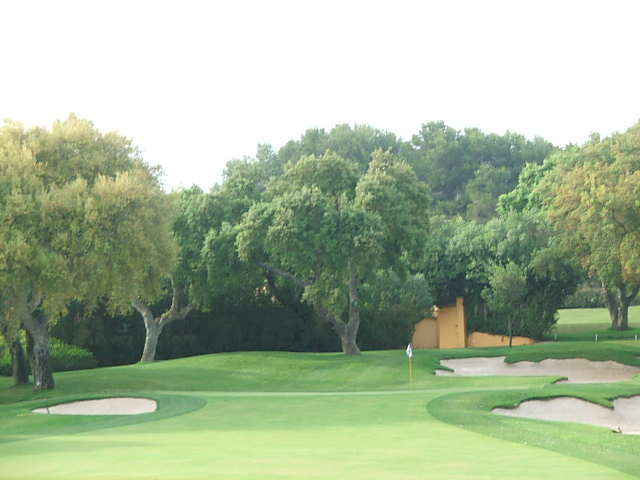
Elevated 10th green
The tenth hole is a 333 meter sweeping dog-leg par four that requires your tee shot to land on the left side of the fairway to avoid the big cork tree that guards the hole on the right. There is a pond right of the fairway and shots on the right side of the fairway tend to run down the severe slope and feed into the water. In this regard, I found Valderrama to be similar to Merion, in that you have to be in the correct position on each fairway or your approach shot is much more difficult. I am not suggesting the two have a similar visual feel, simply that the way you have to approach playing each course is similar, with precision in putting a shot where you want to being of paramount importance.
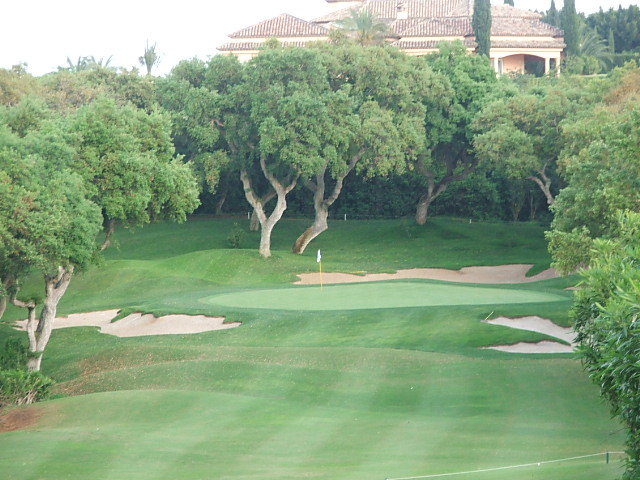
The difficult par three twelfth hole
It's not often that a par three represents the #2 stroke index hole on a golf course. At Valderrama it is ranked as such. The downhill twelfth hole plays over 190 meters. The entire right side is O.B. and the left side falls off down into a ravine. The 'bunkers in the sky' are omnipresent as your ball flys toward the green. The green is small as is typical of the entire course.
The iconic seventeenth hole at Valderrama
When most people think of Valderrama, they remember the 1997 Ryder Cup and think of the seventeenth hole. The seventeenth is a 410 meter par five hole that requires your approach shot to land well onto the green to avoid the tragedy of rolling back into the water. The hole is short enough for a par five to temp you to go for the green in two, leading to a wet ball unless the shot is struck perfectly. The area in front of the green repels balls, slopes toward the water and is shaved. Seventeen is a good hole, but I found it odd that it is actually the most out-of-character hole on the golf course. The cork trees don't come into play on this hole and the shots you have to play are relatively straightforward. It actually stands out for being a hole almost unlike every other one on the course.
17th looking backward
Above is the view looking from the green backward at the shaved area on seventeen. You will remember the balls trickling back down the slope into the water from the Ryder Cup. The Rock of Gibraltar is visible looking to your left when you stand on the seventeenth tee. You can also see the Rock from the elevated eleventh green.
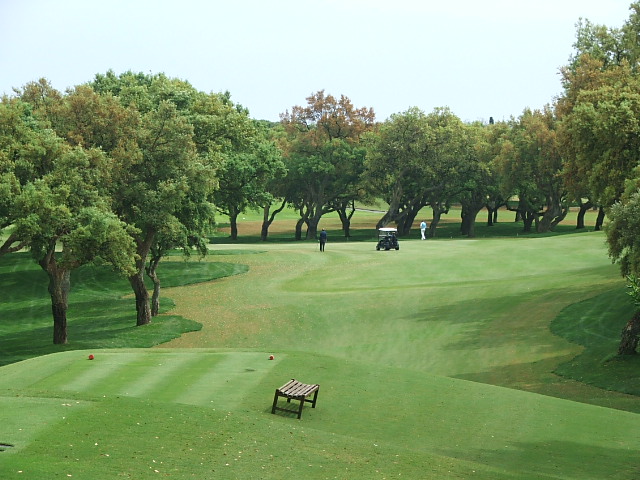
The dogleg left 18th hole
Valderrama doesn't offer a let-up throughout the round and certainly not on the eighteenth hole. The cork trees are a constant presence on the course right up until the end. The eighteenth is a 397 meter dog-leg left. If you can cut the corner and hit over the cork trees on the left you will have a shorter shot to the green. The hole offers a safe option playing to the right, but your remaining shot to the green will be much longer. A pull off the tee is deadly since the rough and waste area left of the trees penalize such a shot.
I liked Valderrama a lot. It is one of the best conditioned courses I have played and I was blessed with a charming and experienced caddy (Vincente) who helped me by suggesting shot shapes and types throughout the round. At times, the course also feels like you are in a bird sanctuary, which is due to a conscious decision on Ortiz-Patino's part to designate many natural areas expressly for such purposes and because the location of the course near the Straits of Gibralter puts it in a natural migratory pattern for birds.
I would describe the course as a cross between Augusta (its conditioning, bunker style and the terrain) and Harbour Town (the overhanging trees and narrow fairways). Rather than finding the trees to be a gimmick, I thought it was a good design characteristic. I had to punch five irons and hybrid clubs, had to hit wedges over tress and attempt to use all clubs to start the ball low, land on the green and then stop. Or I had to try to hit a big hook or slice, mostly without success. It can certainly be frustrating to hit a fairway and not have a clear second shot; but the decision to hit over, under or around a tree is part of Valderrama's charm.
In all my travels, there have only been three courses where I went right from the 18th green back to the first tee: Sand Hills, Cruden Bay and Pine Valley. I liked Valderrama so much, that I went around again very late in the day after playing eighteen holes in the early afternoon. Sometimes it all comes together for you when playing golf, and it did for me at Valderrama. Teeing off at around six in the evening and playing in 2 1/2 hours at twilight was an uplifting experience that I will remember for a long time.

Cork tree with its gnarled bark inside a bunker near the 9th green
While I obviously loved Valderrama, my traveling companions had an almost visceral dislike of the course. While acknowledging that the course was visually beautiful and well-conditioned, they thought is was too tricked up, the drunken fools that they are. Their primary complaint was that too many well struck balls were not rewarded. They felt that it was not a fair golf course, because if you hit the fairway repeatedly as they did, you shouldn't have to hit around trees all day. While I saw this as part of Valderrama's charm, they viewed it as patently unfair. Jackasses.
Barcelona

The last time I was in Spain I passed through Madrid, so this time I arranged my travels so that I could visit Barcelona. I stayed on La Ramba, which is in central Barcelona and offers one of the most delightful areas in the world to go for a stroll down a tree lined boulevard. The architecture of Barcelona is beautiful, especially the iron railings on the exterior of all the buildings. There is much to be said for the slower, more relaxed Spanish way of life.

My only letdown was the well known church in Barcelona, the Sangrada Familia, designed by Gaudi. It is in an out-of-the-way neighborhood, is weird and is covered in scaffolding. It is to churches what Medinah is to golf courses: a big disappointment.

I felt fortunate to have an uneventful and quiet flight home. Luckily, there were enough rolls for everyone flying back to America.
